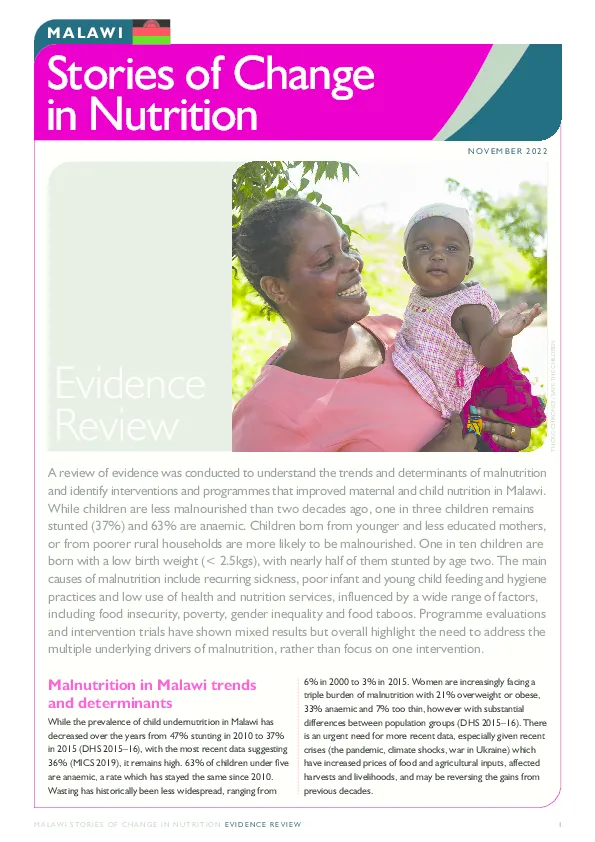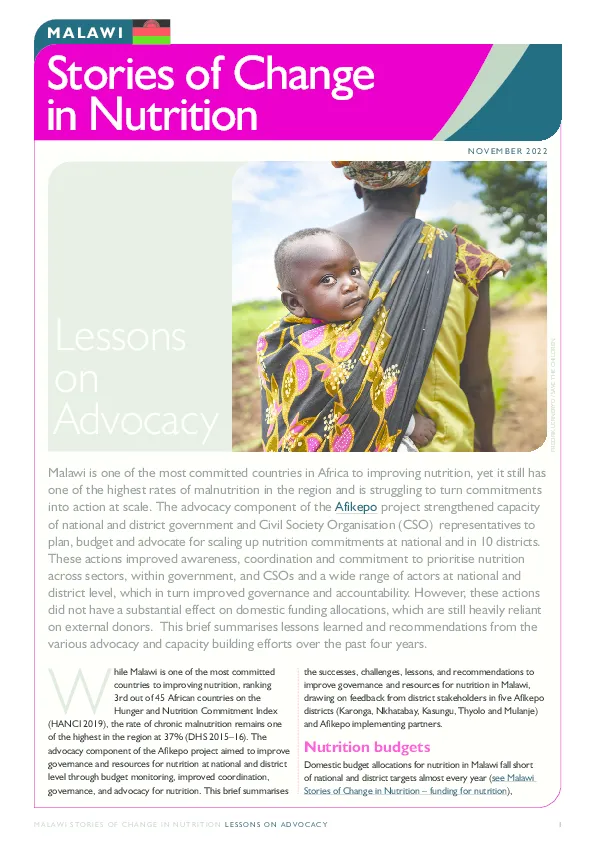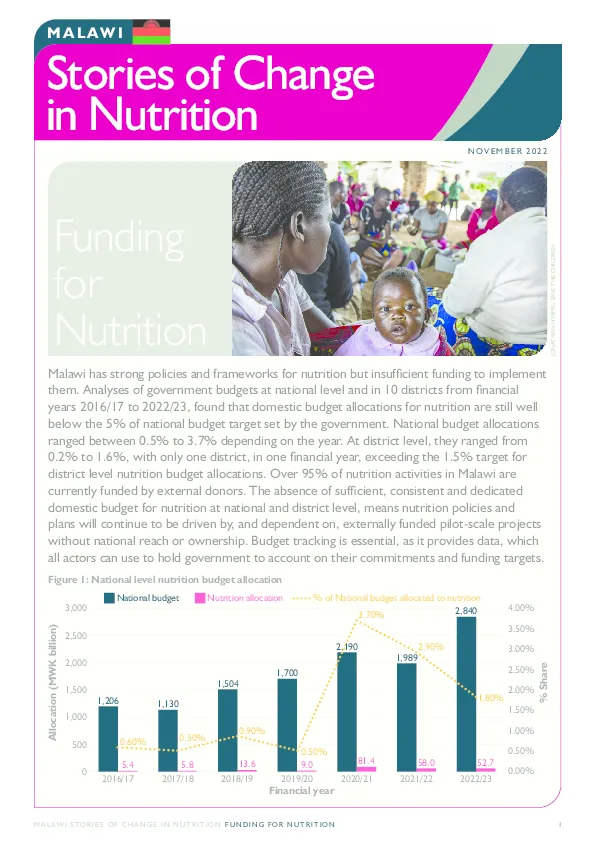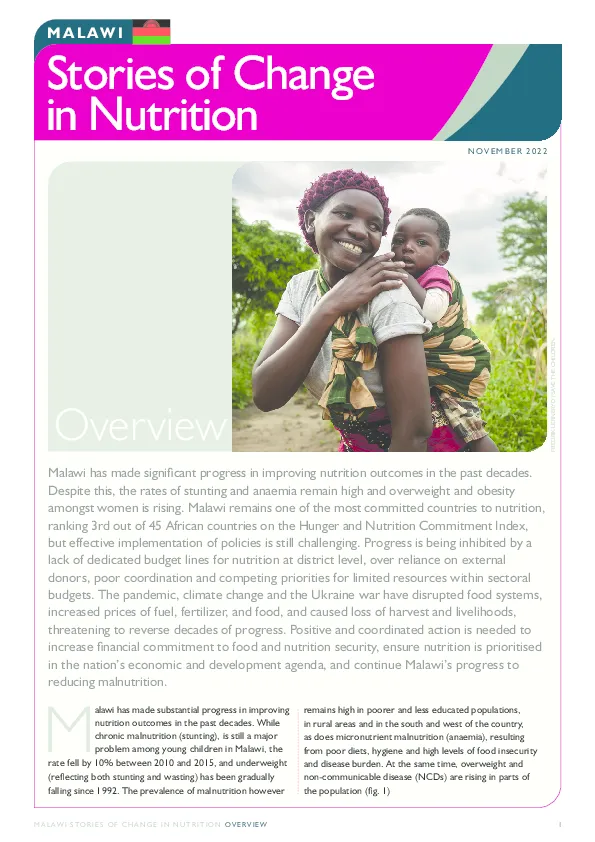
Briefs, Fact Sheets and Brochures
Stories of Change in Nutrition: Evidence Review: Malawi
Publication year:
2022
English
Format:
PDF (1.1 MiB)
Publisher:
CISANET, The Civil Society Agriculture Network,European Union,IDS, Institute of Development Studies,Save the Children International
A review of evidence was conducted to understand the trends and determinants of malnutrition and identify interventions and programmes that improved maternal and child nutrition in Malawi. While children are less malnourished than two decades ago, one in three children remains stunted (37%) and 63% are anaemic. Children born from younger and less educated mothers, or from poorer rural households are more likely to be malnourished. One in ten children are born with a low birth weight (< 2.5kgs), with nearly half of them stunted by age two. The main causes of malnutrition include recurring sickness, poor infant and young child feeding and hygiene practices and low use of health and nutrition services, influenced by a wide range of factors, including food insecurity, poverty, gender inequality and food taboos. Programme evaluations and intervention trials have shown mixed results but overall highlight the need to address the multiple underlying drivers of malnutrition, rather than focus on one intervention. A review of evidence was conducted to understand the trends and determinants of malnutrition
and identify interventions and programmes that improved maternal and child nutrition in Malawi.
While children are less malnourished than two decades ago, one in three children remains
stunted (37%) and 63% are anaemic. Children born from younger and less educated mothers,
or from poorer rural households are more likely to be malnourished. One in ten children are
born with a low birth weight (< 2.5kgs), with nearly half of them stunted by age two. The main
causes of malnutrition include recurring sickness, poor infant and young child feeding and hygiene
practices and low use of health and nutrition services, influenced by a wide range of factors,
including food insecurity, poverty, gender inequality and food taboos. Programme evaluations
and intervention trials have shown mixed results but overall highlight the need to address the
multiple underlying drivers of malnutrition, rather than focus on one intervention. This is one of four Malawi Stories of Change in Nutrition, unpacking the drivers of change in nutrition in the country.
Read full abstract
View & Download
English
1 Documents
Document information
Publisher
Format
Content type
Country
Region
Rights
© Author/Publisher
Keywords
Found a mistake? Help us improve!
If you have noticed a document assigned to the wrong author or any other inaccuracies, let us know! Your feedback helps us keep our data accurate and useful for everyone.
Share
Link




